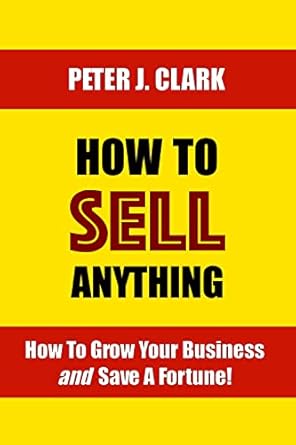Ten content marketing trends for 2013
Content marketing, which usually involves a brand making digital content available to its target audience, is an increasingly powerful way of attracting, acquiring and engaging customers, but it's also a technique that's changing rapidly before our eyes. With this in mind, Ingrid Froelich from SDL Web Content Management Solutions details here the ten key content marketing trends to watch in 2013.
The trends that Froelich foresees altering the marketing landscape go far beyond the digital platform and affect the usage of digital data to better inform business decisions and processes throughout the organisation - such as the use of 'Big Data' gathered digitally to provide a more personal and better targeted approach to both new and existing customers, ultimately driving a sense of 'personal understanding' and therefore satisfaction, engagement, and even loyalty to the brand. The ten major trends identified are as follows:
- Data: go big or go home
Big Data provides vast amounts of information available to organisations. This includes everything including visitor behaviour, posts on social media sites, digital pictures, videos, purchase transaction records and location-based information. To cope with this data, new approaches and tools for in-database analytics, text mining and sentiment analysis will provide marketers with a better understanding of data points, quality and gathering. With integration across data sources, they will be able to actively use customer preferences, transaction history and preferred interaction channels to guide their marketing efforts. - A personal touch
Providing a personal touch will become a prerequisite for companies who want to keep online visitors from content hopping. Personalisation plays off the increased capabilities of using big data but needs to take into account online customers' privacy requirements. Real-time factors, such as click behaviour, search behaviour, device detection, location and more will supplement customer information to inform marketers what any specific customer wants to do (task or objective) and where and how they want to do it (device and location). In addition to product recommendations, this can include images or related content based on their profile and behaviour. - Mobility
Current trends show that content consumption via mobile continues to grow with a marked decrease in consumption of other channels. With smartphones now comprising 50% of mobile phones purchased, the expectations for this channel are even higher. Moving forward, targeted mobile ads, apps, and mobile-specific websites will become a standard way of doing business, much like web and email marketing. Integrated marketing plans will automatically include the mobile channel and mobile tactics. - Content-rich differentiation
Content Marketing remains an essential part of the lead generation process and provides a "value add" that extends beyond product promotion. Through integrated content plans and technology that span all channels, marketers can repurpose and target content. Strategic use of a broad variety of tactics (apps, webinars, site content, bylined articles, email, events, social media, and so on) will be coordinated to follow the customer journey and hunger for value. - Modular content & responsive design
With more and more channels available, the ability to mix and match modular content will increase in importance. Modular content for web, email, mobile and a variety of devices will need to be combined with responsive design to ensure content presentation is optimized for any device. This modular "reate once publish everywhere" approach ensures content is used to its fullest extent. But "everywhere" needs to take into account what a customer actually wants to do. Content modules will be based on purpose, message, relationship (between content) and priorities. - Extra sensory connection
Through experiential marketing, customers engage and interact with brands, products, and services in ever more sensory ways. As marketers increasingly understand what customers do where, they can apply innovative experiential approaches to the appropriate channel. Interactive and immersive digital experiences will be increasingly possible through tablets and touch-screen environments. Swipe, interaction, highly visual interfaces and task-based design will lead visitors through a story-telling process, where they make the choices that lead the next information they'll see. - So-Lo-Mo The merger of Social, Local, and Mobile (SoLoMo) trends reflects how customers really interact. With mobile advancements, marketing strategy will increasingly address these three variables together, so that content meets target audiences' expectations. Social media and location data can then provide in-the moment mobile engagement and promotion.
- Marketers go to their customers
Marketers no longer rely on a website's "Share" button or their own website content and will increasingly post content through Facebook, LinkedIn, YouTube and others. They will also employ a broader variety of content -articles, infographics, e-books, blog posts, videos and social media updates - to deliver a company voice that people want to listen to - on the sites that customers want to interact with. - Online / real world interaction
As most customers are now always online, more integrated strategies will emerge for retail, event, face-to-face interaction, social media, applications, campaigns and action points. There will be more relevant, interactive opportunities for mobile customers through mobile brand interaction (e.g. Foursquare and Facebook). This mobile engagement will keep them connected through things like in-store promotions, travel information, location-sensitive apps, event interaction and social media. - Your organisation gets social
2013 will see social media strategy mature with more and more cross-functional teams (brand managers, marketing, customer service, sales, product development, collaboration, work process, HR) involved and fewer silos across organisations. It is now clear that social media has lost its status as "new media" and is now firmly entrenched in how businesses communicate.
Sources: SDL Web Content Management Solutions / The Marketing Factbook.
Copyright © 2013 - 2025 The Marketing Factbook.
Categorised as:
- Customer Experience
- Customer Loyalty
- Knowing The Customer
- Marketing Know-How
- Marketing Technology
